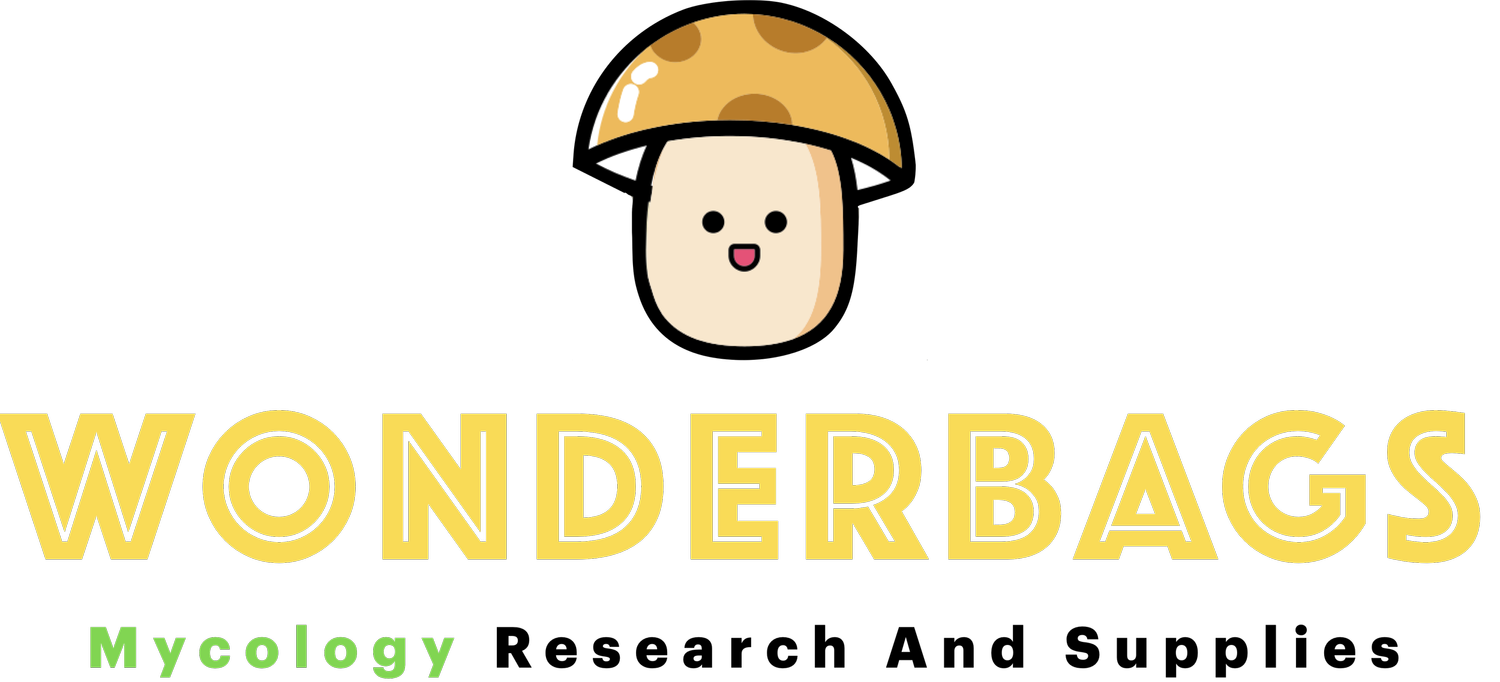Microscopy 101: Watching Mycelium at Home—Tools, Temps, and Safety
Wonderbags are laboratory specimens, not lunch. This guide walks you through the gentle art of looking at mycelium—taking tiny samples, sliding them under a basic compound microscope, photographing the hyphae as they weave, and then disposing of everything responsibly. Follow the steps below and you will finish each session with crisp images, tidy notes, and zero risk of an accidental grow‑out.
Why Bother with Microscopy?
The white web inside a Wonderbag is the mushroom’s hidden life. Zooming in lets you watch hyphae branch, fuse, and race for fresh nutrients. You can compare strain vigour, learn to recognise early bacterial contamination, and contribute pictures to citizen‑science databases—all without ever fruiting a cap. Microscopy replaces speculation with observation and keeps the entire experience in the research lane.
The Essential Kit (in Plain English)
You do not need a medical‑school lab—just a short shopping list:
Compound microscope that reaches 400 × magnification. LED illumination is fine and a decent starter scope costs about $150.
Slides and cover slips. Pre‑cleaned glass prevents smudges.
Sterile scalpel or inoculation loop to tease out a 2‑millimetre strand of mycelium.
70 % ethanol, nitrile gloves, and a dust mask for basic aseptic practice.
Phone‑to‑eyepiece adapter if you plan to photograph or film the sample.
Notebook or a simple spreadsheet to log date, magnification, and observations.
Setting Up and Taking Your First Peek
Find a calm corner. A draft‑free desk or closet shelf keeps airborne spores away from the slide.
Wipe everything. Spray or wipe the desktop, microscope stage, and tools with ethanol, then let them dry.
Sample the bag. Slip on gloves, open the Wonderbag just enough to snip a rice‑grain piece of mycelium. Immediately reseal the bag.
Mount the slide. Drop the fragment in the centre, add a single drop of sterile water, and lower the cover slip from one edge to chase out bubbles.
Focus in stages. Start at 40 × to locate the network, then move to 100 × and 400 × for detail. Fine‑tune the light until the hyphae glow like silver threads.
Record the moment. Clamp your phone to the eyepiece and capture a still or ten‑second clip. Note the magnification and sample day (for example “Day 12 colonisation”) in your log.
Expect to spend under ten minutes from sampling to snapshot once you have the rhythm.
Temperature, Humidity, and Other Quiet Variables
Keep unopened Wonderbags at ordinary indoor warmth—around 70 – 75 °F (21 – 24 °C). That range encourages smooth, even colonisation. During the brief minute you slice out a sample, ambient room temperature (68 – 72 °F) is perfect; higher humidity is no longer critical because the mycelium now sits under a cover slip. Letting the bag rest in the same room as the microscope avoids sudden swings that could stall growth between sessions.
Incubation Timeline & Sampling Schedule
First Week – Hands Off. Place the sealed Wonderbag on a shelf at room temperature. For the first 7 days the mycelium races through the remaining substrate; opening too early risks stalling growth.
Day 8 to 10 – First Peek. Hyphal knots often appear—tiny white tufts that signal readiness for observation. Briefly open the bag, snip a rice‑grain sample, reseal with a fresh strip of tape, and return it to the shelf.
Day 14 to 18 – Second Observation (Flush 1). If small primordia (pin‑sized bumps) have formed, repeat the sampling step. After resealing, maintain ambient light and airflow; the bag will support up to three natural flushes even while remaining predominantly closed.
Subsequent Flushes. Wait until the visible structures have matured, then open only long enough to gather research specimens or photographs. Reseal immediately. Most Wonderbags yield two or three flushes before nutrients are exhausted.
Key point: Keeping exposure short and resealing quickly preserves humidity and minimises contamination, giving you several distinct observation windows without ever turning the project into a full fruiting operation.
Staying Clean and Safe
Gloves and a mask do most of the work. Flame or wipe the scalpel after every cut so you never drag an outside microbe back into the bag. Keep drinks and snacks out of the work zone—coffee splashes and agar do not mix. If a piece of substrate falls on the desk, flood the spot with a splash of 10 % household bleach, wait a minute, then wipe with ethanol.
Photographing for the Long Term
Steady the phone mount, brace your elbows on the table, and use the timer or voice shutter so you do not nudge the eyepiece. Store images in a cloud folder named by species and date; future you will thank present you when you scroll through a time‑lapse of clamp connections forming. When you are happy with a picture set, consider uploading it—anonymously if you choose—to platforms such as Mushroom Observer or the Amateur Mycology Network. Shared data advances the field.
Responsible Disposal
When the study ends, heat‑treat any used slides and spare substrate. Place them in an old pie tin, bake for an hour at roughly 200 °F (95 °C), let cool, double‑bag, and send to household trash. Do not compost, bury, or attempt to fruit the material.
Quick Session Checklist
Gloves and mask on
Bench wiped with ethanol
Fresh sterile tool ready
Sample size: 2 mm
Photos labelled before saving
Substrate heat‑treated before disposal
Stick this list above your desk and you will never miss a step.
References
P. Stamets, Growing Gourmet & Medicinal Mushrooms
Wonderbags are supplied exclusively for microscopy and taxonomic observation. Cultivation for consumption is unlawful and voids any guarantee.
